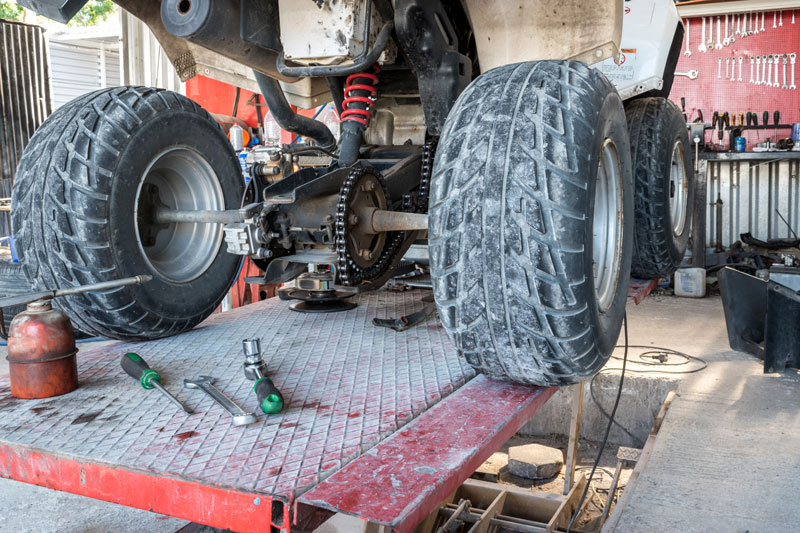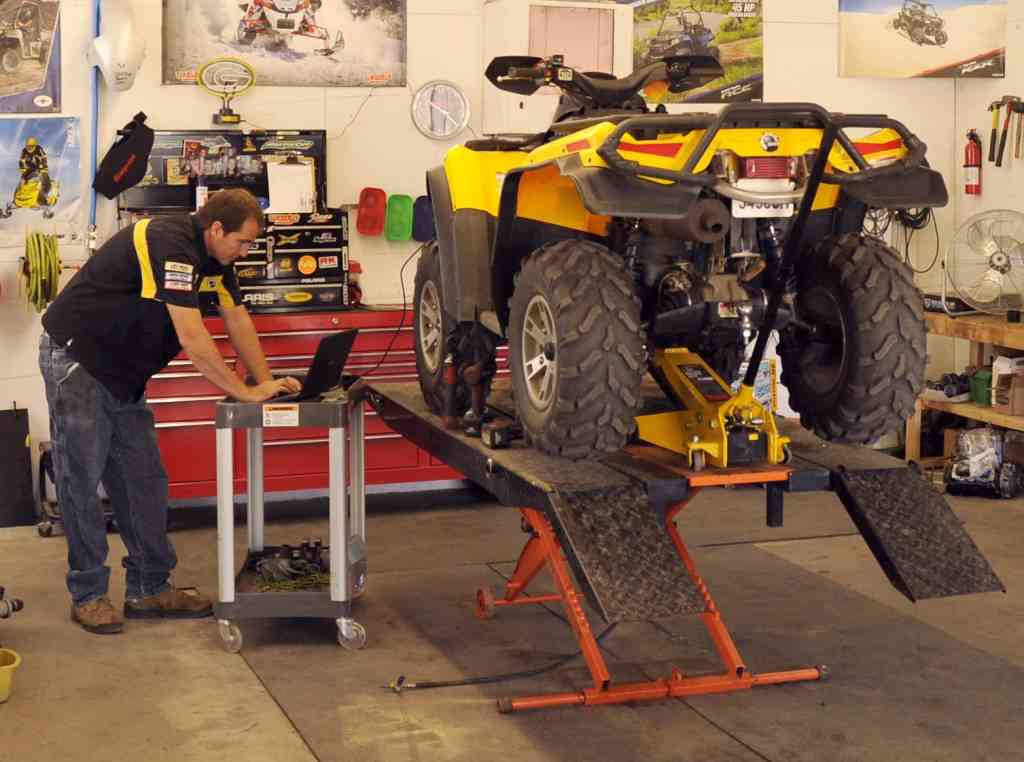Get ready for Extreme Fun: Deciphering the Globe of ATV Enjoyment
Get ready for Extreme Fun: Deciphering the Globe of ATV Enjoyment
Blog Article
ATV Riding Strategies: Grasping the Art of Off-Roading

Body Positioning
To successfully browse with difficult off-road terrain, it is essential for ATV motorcyclists to regularly keep correct body positioning. Maintaining the appropriate body position while riding an ATV not just boosts control and stability however likewise guarantees the rider's safety. By adopting the appropriate body positioning methods, bikers can effectively disperse their weight, improve their balance, and reduce the risk of crashes or injuries.
One secret aspect of correct body positioning is maintaining the feet on the foot secures. Positioning the feet on the foot pegs permits the rider to keep stability and control over the ATV. The motorcyclist's knees should be somewhat curved, providing a mild suspension to absorb shocks and keep balance. Additionally, the cyclist's upper body should stay kicked back and flexible, enabling seamless and fast activities when necessary. This consists of keeping a light hold on the handlebars to preserve control without excessive force.
Furthermore, the biker's eyes need to always be focused in advance, checking the terrain and expecting any type of challenges or adjustments in the route. By preserving a forward stare, cyclists can make instant choices and respond appropriately to testing surface.
Throttle Control
Building upon the significance of proper body placing for ATV motorcyclists, grasping throttle control is an important ability that enables cyclists to efficiently steer with various off-road terrains. Strangle control describes the capacity to regulate the quantity of power provided to the ATV's engine. By understanding how to control the throttle, cyclists can guarantee a regulated and smooth velocity, allowing them to navigate challenges with precision.
Unexpected or jerky activities can cause the ATV to shed traction or become unsteady, making it difficult to keep control. This method allows the ATV to preserve a stable speed and provides much better traction, decreasing the threat of accidents.
Along with smooth modulation, cyclists must also find out how to balance the throttle with other riding strategies, such as body positioning and stopping. For example, when climbing high hills, riders need to apply sufficient throttle to preserve energy without subduing the ATV or triggering wheel spin. When coming down high inclines, cyclists must make use of the throttle in combination with click here for more correct body stopping and placing to maintain control and avoid the ATV from gliding or tipping over.

Braking Methods
An important facet of ATV riding methods is grasping reliable braking techniques. When it comes to off-roading, understanding how to brake properly can make a considerable distinction in your security and control pop over to this site over the vehicle. Among one of the most vital braking methods is utilizing the front brake greater than the rear brake. The front brake provides most of the stopping power, so it is crucial to use it deliberately. Nonetheless, it is important to bear in mind that rough stopping with just the front brake can create the ATV to pitch forward, possibly bring about loss of control or perhaps turning over. Therefore, it is suggested to use both brakes all at once, yet with more stress on the front brake. An additional crucial strategy is to avoid securing the wheels while braking. Securing the wheels can result in skidding, making it difficult to maintain control. To stop this, squeeze the brake bars gradually and release them somewhat if you feel the wheels securing. By mastering these stopping techniques, you can boost your ATV riding abilities and make sure a risk-free and satisfying off-roading experience.
Cornering Methods
One crucial facet of mastering ATV riding strategies is recognizing reliable cornering methods. Collaring on an ATV can be difficult, but with the right techniques, bikers can browse turns securely and successfully. The secret to successful cornering is to keep control of the ATV while making best use of grip and decreasing the threat of directory toppling.
To carry out a proper cornering method, cyclists need to come close to the turn at a proper rate, guaranteeing they are not going also quick or as well slow. It is critical to shift the body weight in the direction of the inside of the turn, leaning right into it to preserve equilibrium and security. This assists to counterbalance the centrifugal pressure and maintains the ATV upright.
Additionally, bikers must maintain their eyes focused on the exit point of the turn instead of the prompt path in advance (ATV). This permits smoother and much more specific guiding, as it aids the cyclist anticipate any type of barriers or changes in terrain
In addition, appropriate throttle control plays a considerable duty in cornering. Cyclists have to regulate the throttle smoothly, preventing abrupt accelerations or decelerations, which can trigger loss of control.
Uphill and Downhill Riding
When navigating off-road terrain, ATV riders have to grasp the techniques for uphill and downhill riding to keep control and make certain security. Downhill riding, on the other hand, calls for motorcyclists to lean back and move their weight in the direction of the back of the ATV. By mastering the methods for uphill and downhill riding, ATV bikers can with confidence deal with various off-road terrains and appreciate a exhilarating and safe adventure.
Conclusion
In final thought, grasping the art of ATV riding calls for a combination of body positioning, throttle control, stopping techniques, and reliable cornering. Uphill and downhill riding also call for details skills to browse securely. By implementing these methods, riders can boost their off-roading experience and boost their total control and security on the ATV.
ATV Riding Techniques: Mastering the Art of Off-Roading is a detailed guide that dives into the intricacies of understanding the abilities required for off-road ATV riding. Whether you are a novice or an experienced motorcyclist, ATV Riding Techniques: Grasping the Art of Off-Roading offers crucial guidance to assist boost your off-road ATV riding abilities to the following degree.

Report this page